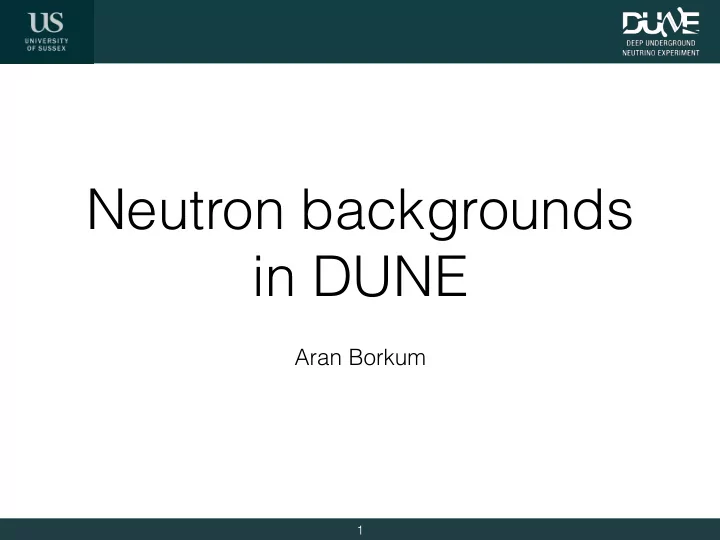

Neutron backgrounds in DUNE Aran Borkum 1
Overview • Update on neutron capture rates in LAr • Comparison with work by JBeacom • The issue with the current background production model • Thought on improvements to the background model Aran Borkum 2 15/03/2019
Neutron capture rate • Generated a sample of supernova events with radiological from MCC11 prodmarley_nue_spectrum_radiological_timedep_hudepohl_11.2M_3perevent_dune10kt_1x2x6_mcc11 • Results: Neutron capture rate: 46 ± 5 Hz • Result from JBeacom: 81 Hz (is this close enough?) • neutrons captured Neutron capture probability, : 1.21% • neutrons produced Is this good news; hard to say for sure • • Question: are we sure we’re simulating neutrons properly • More importantly, are we simulating the geometry properly Aran Borkum 3 15/03/2019
Rate calculation • With 1000 events, we got ~25 CPA APA CPA captures 25 Rate = 0.12 × 1000 × 2 × 0.002246 s Volume ratio Event generation time #Events Scale factor From radio-gen • Are we sure that the volume ratio being used is giving us the right thing? Aran Borkum 4 15/03/2019
Where the neutrons are coming from • Silver sides are where the radiological neutrons are being sourced from • Issue: This does not lend itself to trivial scalability from a 1x2x6 module to a 10kT module • Also, are we producing too many active sides? • Is there a better setup for the generator to use? Aran Borkum 5 15/03/2019
Approach without having to scale by volume • Build up the full 10kT out of segments • Model each 4 separately and then combine results Aran Borkum 6 15/03/2019
Segmented approach 4 long side 4 corner pieces pieces 4 short side 4 central pieces pieces Aran Borkum 7 15/03/2019
The problem with the segmented approach n • No accounting for neutrons that travel between segments • In current scheme these neutrons are considered to have “escaped the detector” Aran Borkum 8 15/03/2019
What we should do • Simulate the full geometry of a 10kT detector • Run the radiological generation • Run the GEANT4 • With this we can then see if the scaling is leading us down the wrong path Aran Borkum 9 15/03/2019
Recommend
More recommend